Article updated on February 11, 2022
Text and photographs: Claire Lessiau & Marcella van Alphen
All photographs taken in the wild in South Africa
For many, a safari is a dream trip, often a once in a lifetime experience. This is why it is important to select the type of safari and game park carefully to avoid any disappointment. South Africa is one of the best countries in the world to observe wildlife in beautiful and varied landscapes showcased in its two main types of parks: government-run parks and private game reserves. The offer is so vast and prices so varied that we have put together some thoughts in order to help you select the safari that is the most adapted to you.
Pin this article for later!

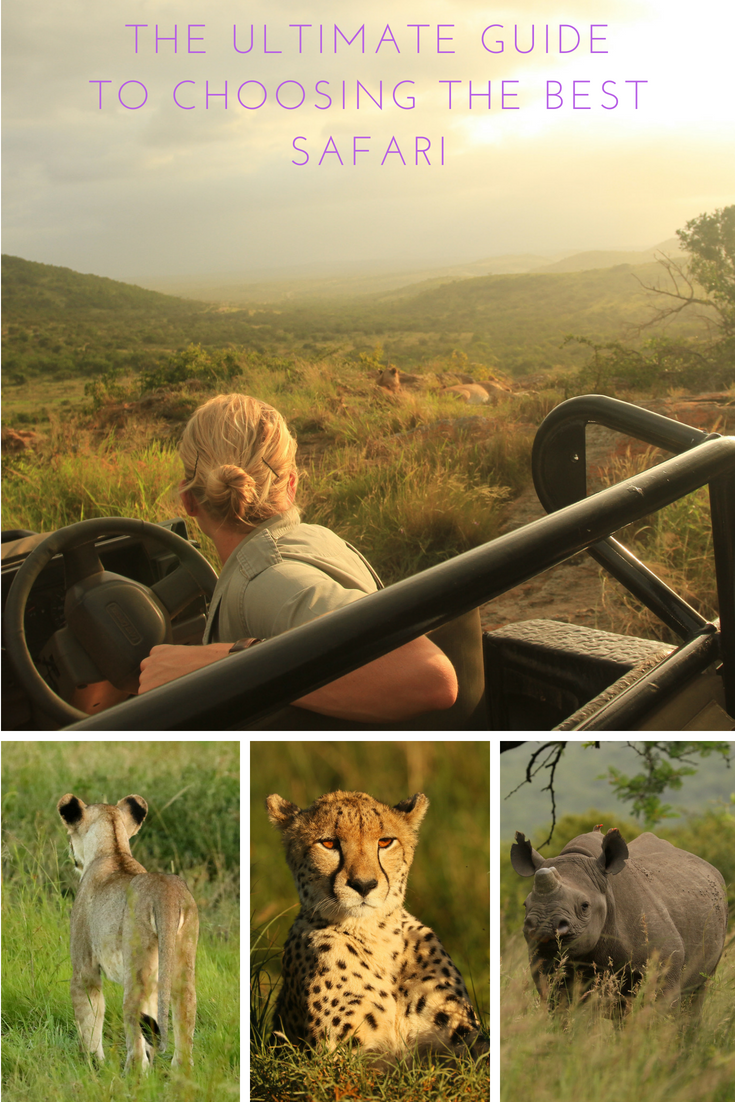
To make it pertinent, we regrouped our guidelines around different themes:
- Your philosophy,
- Your comfort,
- Conservation efforts of the parks,
- Ethics of the parks and how to make sure you give your money to the right organizations,
- Health considerations,
- Area and landscape,
- Season,
- Budget,
- Insider’s tips for you to make the most of your safari.

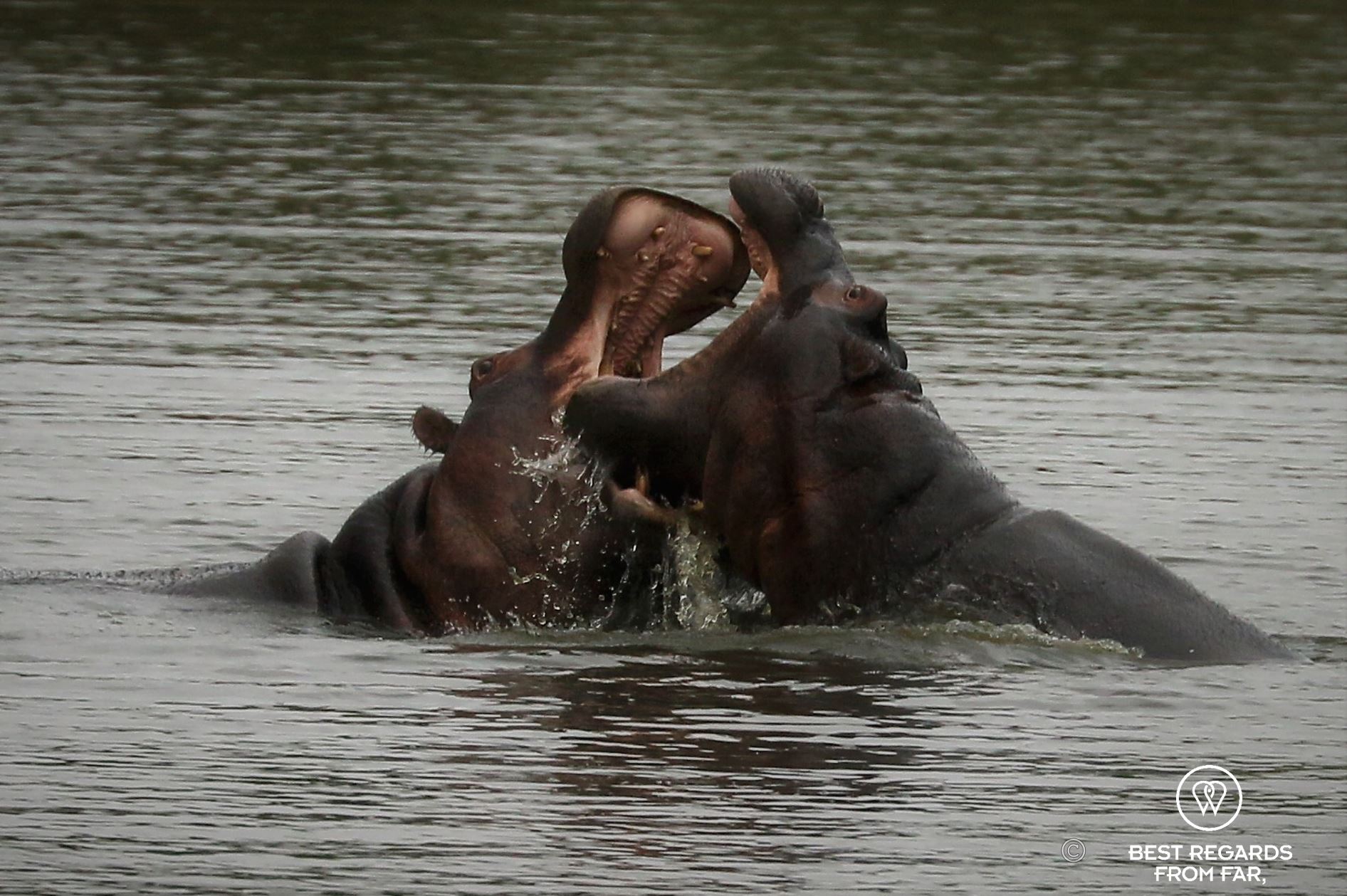
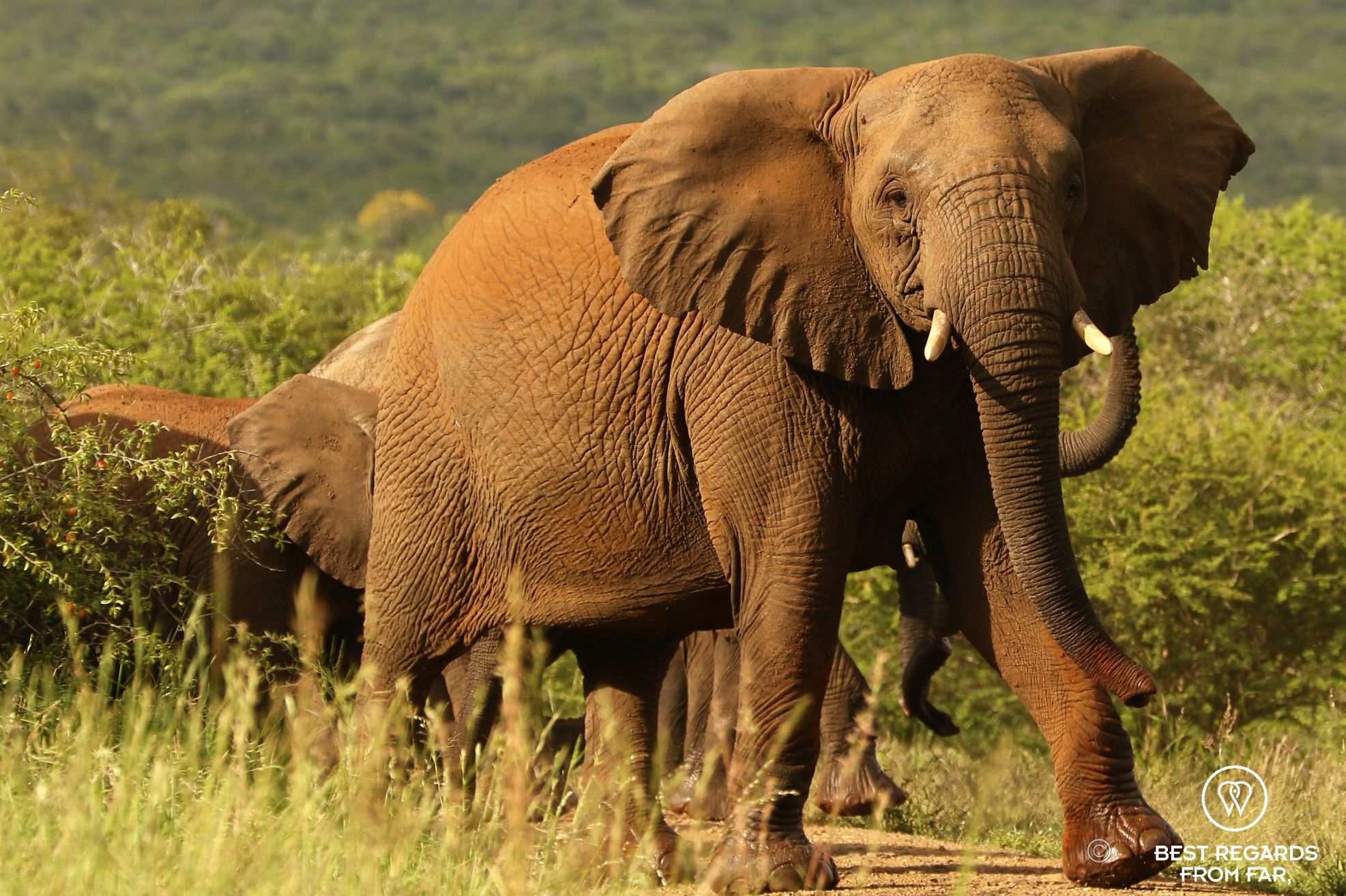
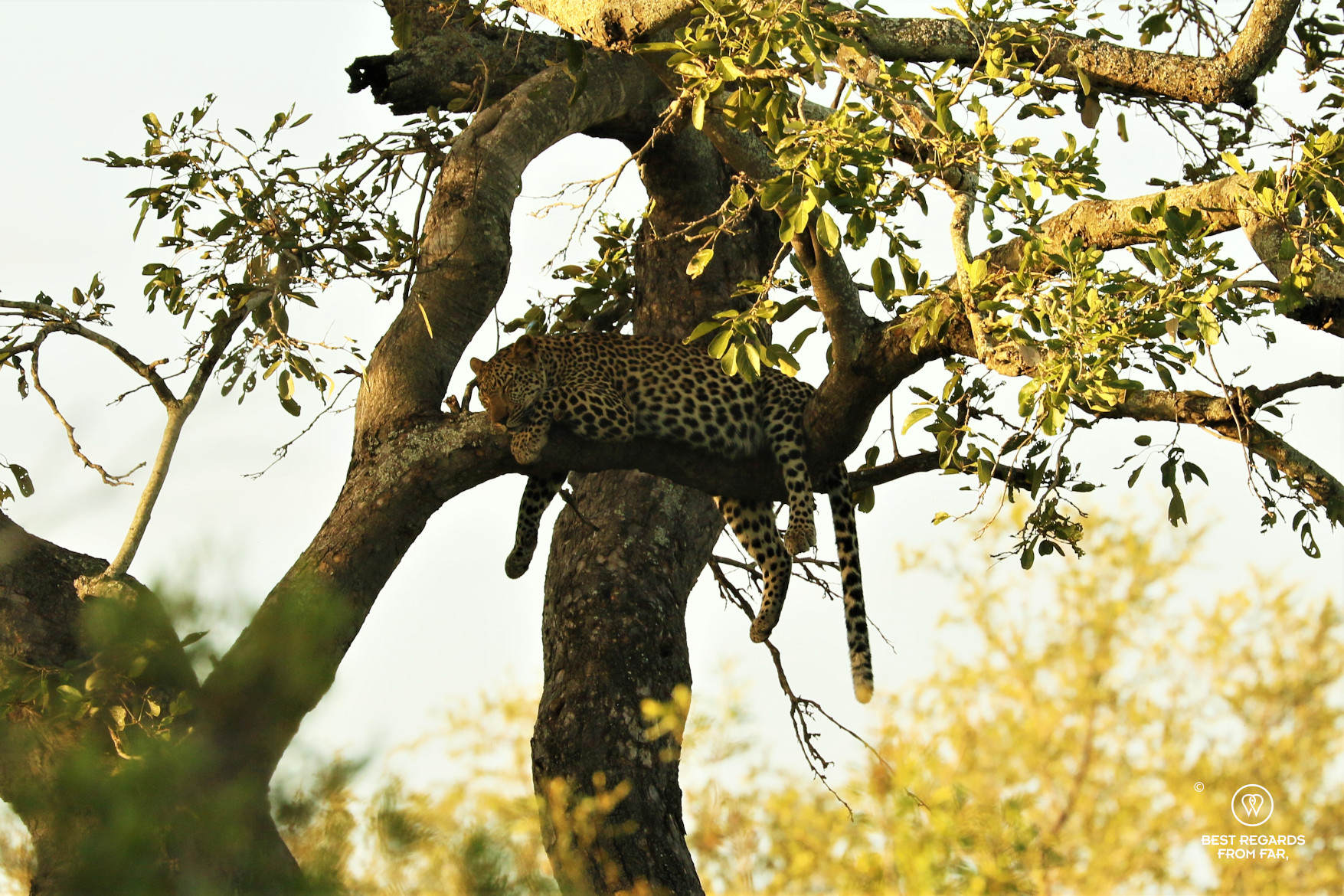
Your philosophy
The philosophy of the safari is the most important aspect to select the type of safari and game park properly.
- Is your nickname the spotter? Do you know a lot about animal behaviour? And are you really good at multitasking?
Then your ideal safari is a self-driving adventure in one of the South African National Parks (SANParks) or KZN Parks (government-run parks in the province of KwaZulu-Natal): only government-run parks allow self-driving on their roads or dirt roads. Note that most national parks are drivable with regular cars, and a 4×4 may be needed only for some specific dirt roads within the park.
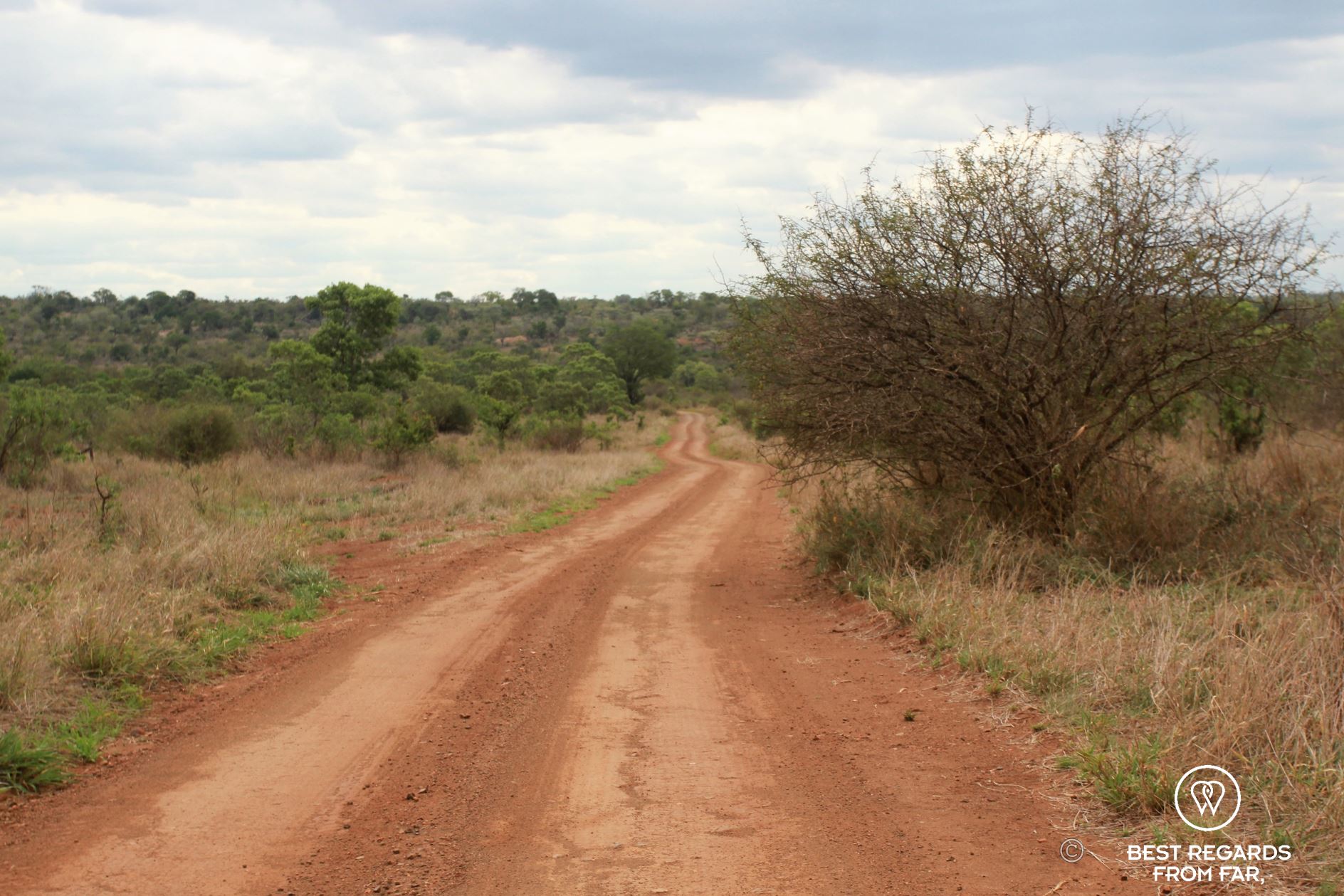
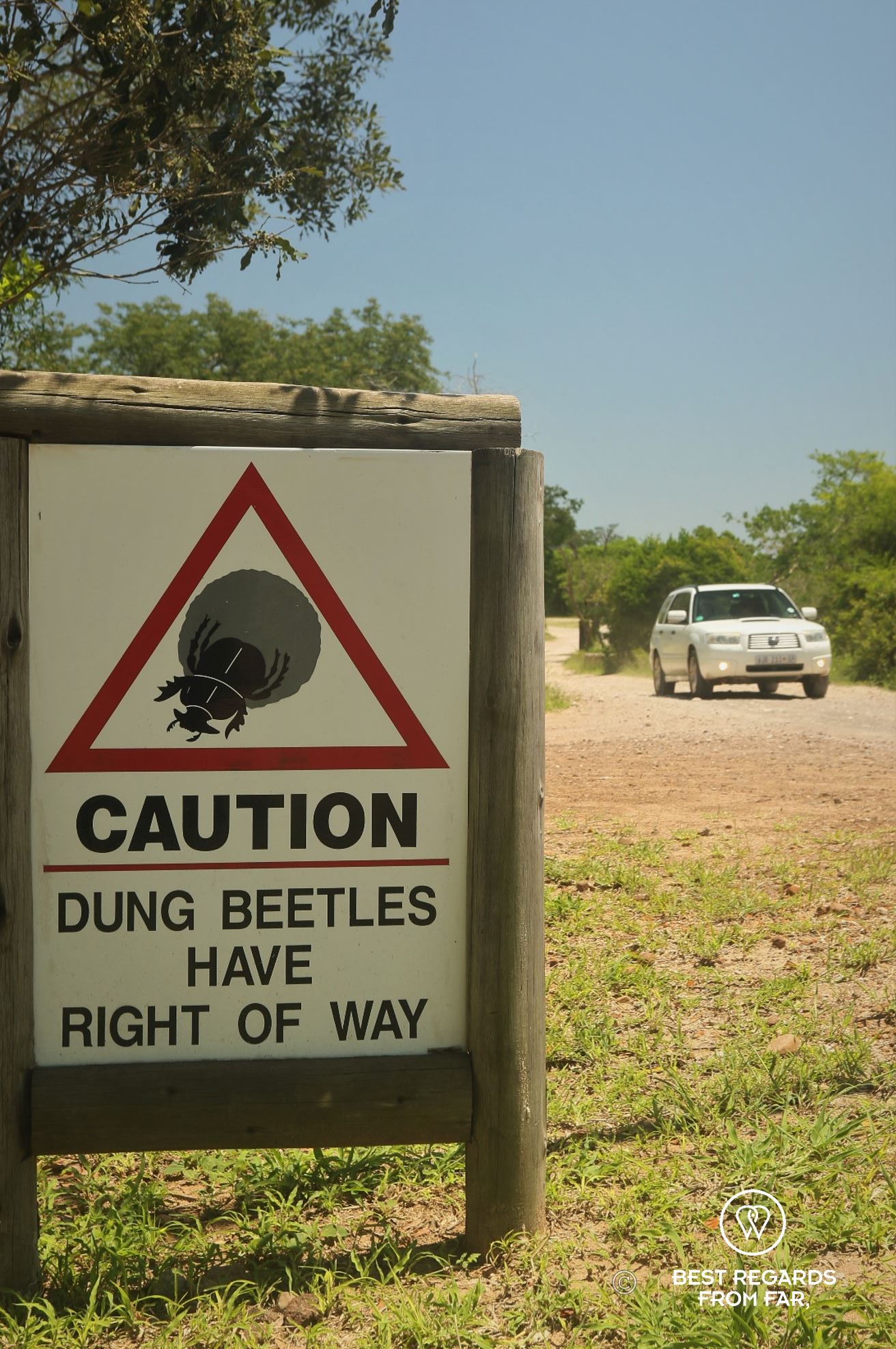
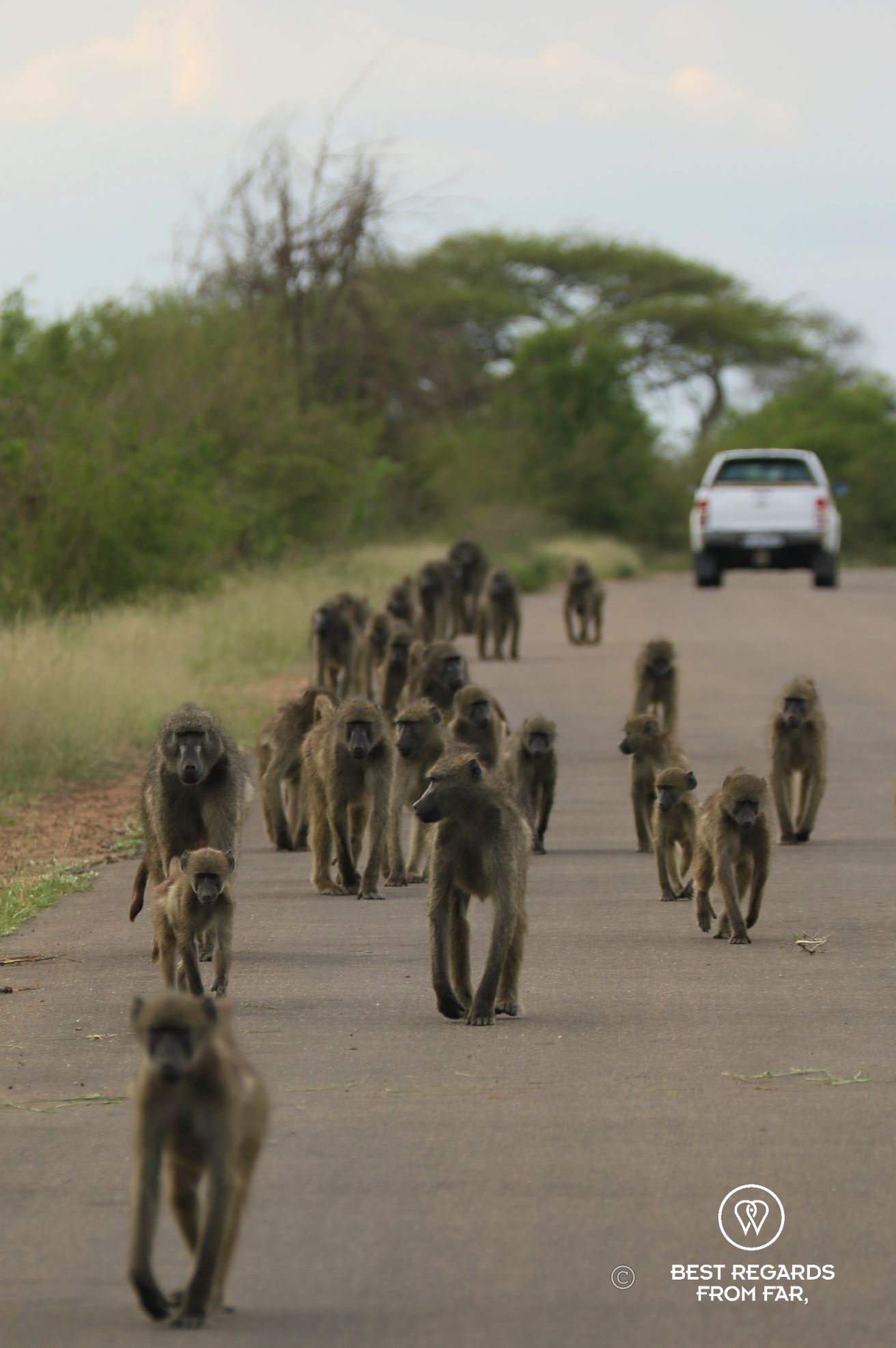
The thrill of being only you and your party in your car spotting some wildlife and living unique experiences in the wild for as long as you wish is merely irreplaceable: vultures feeding on a carcass, detecting the white tip of a long tail hanging from a branch leading to this leopard in the tree, observing these two lions mating, feeling unease when a close-by teenage elephant blocks the road trying to impress you, not really knowing what to do when vervet monkeys are getting very interested in your snacks…
Be warned: it may sound easier than it actually is. Spotting wildlife comes with practice and a different way of looking through the bush, deeper, and tuned in the environment. Focusing on signs is essential: a track along the road, a moving branch, a slightly darker spot in the bush, an alarm from a bird signalling a nearby predator… Beyond the spotting of wildlife, it is also essential the driver avoids tortoises, snakes, chameleons, or dung beetles crossing the road, and makes sure to not drive on animal dung to prevent an insect genocide! Multitasking and team work in the vehicle are essential and may require some practice! It is often on game drives with safari guides that one can learn, or even better, following a course in the bush.
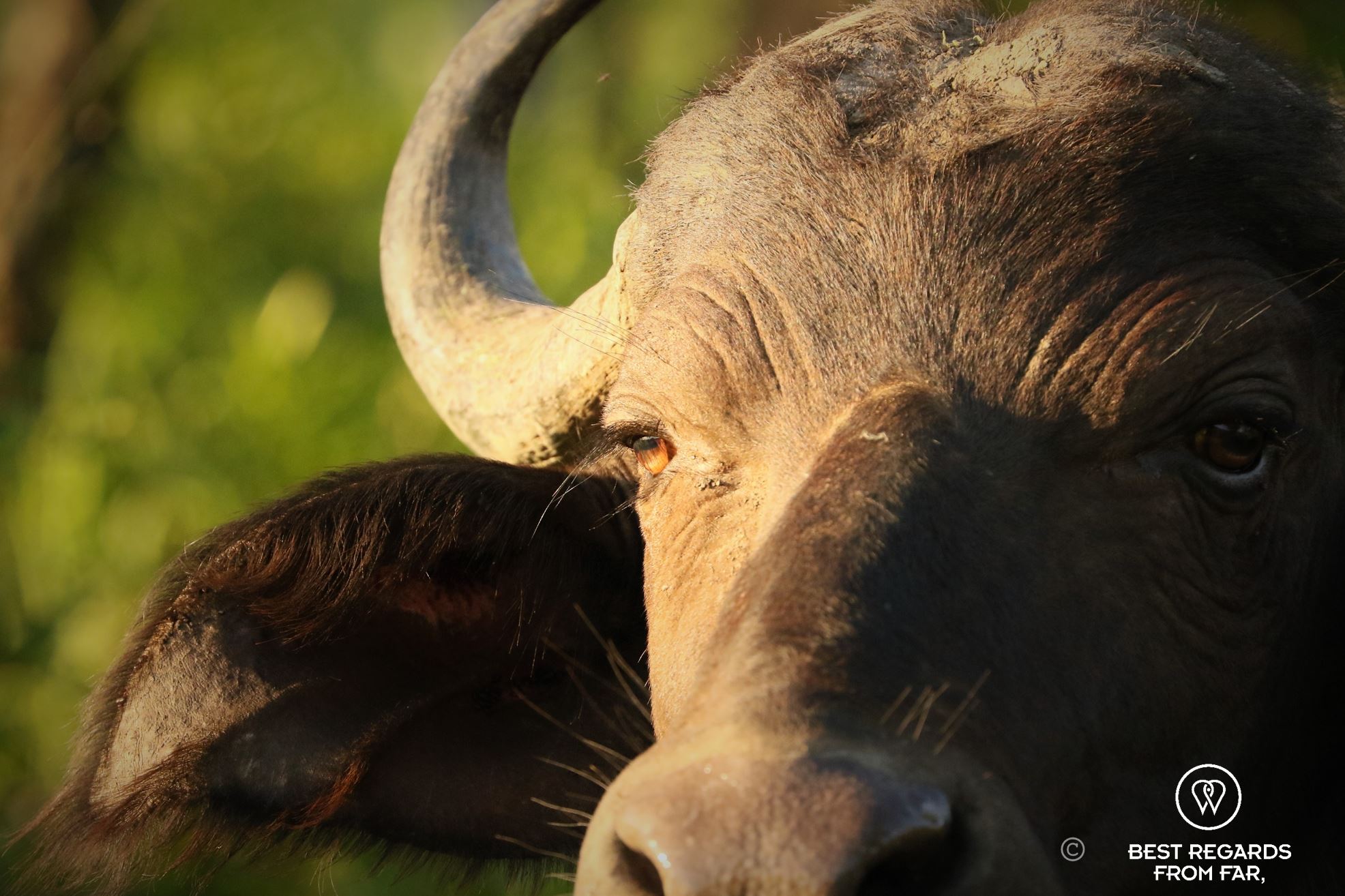
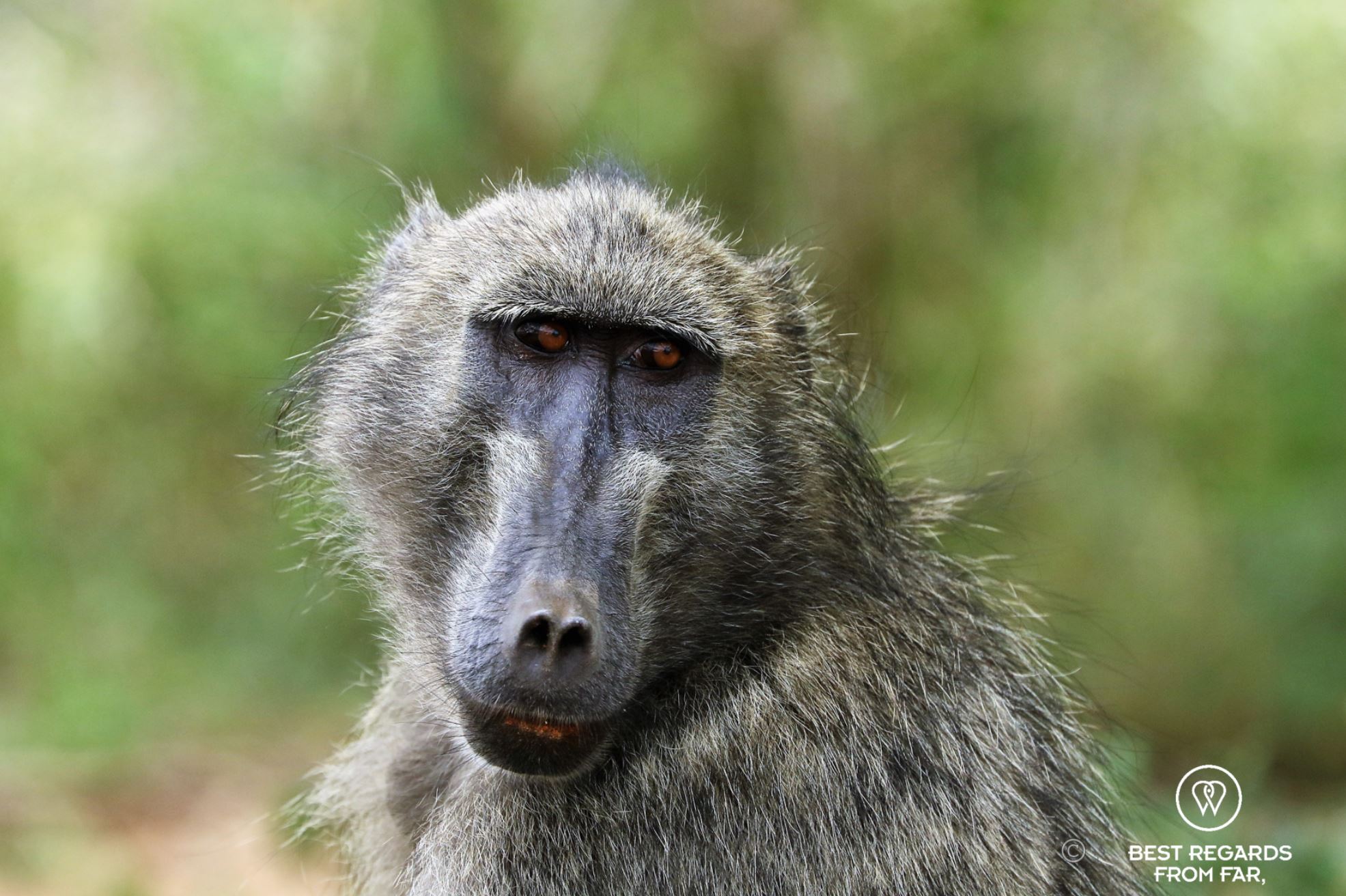

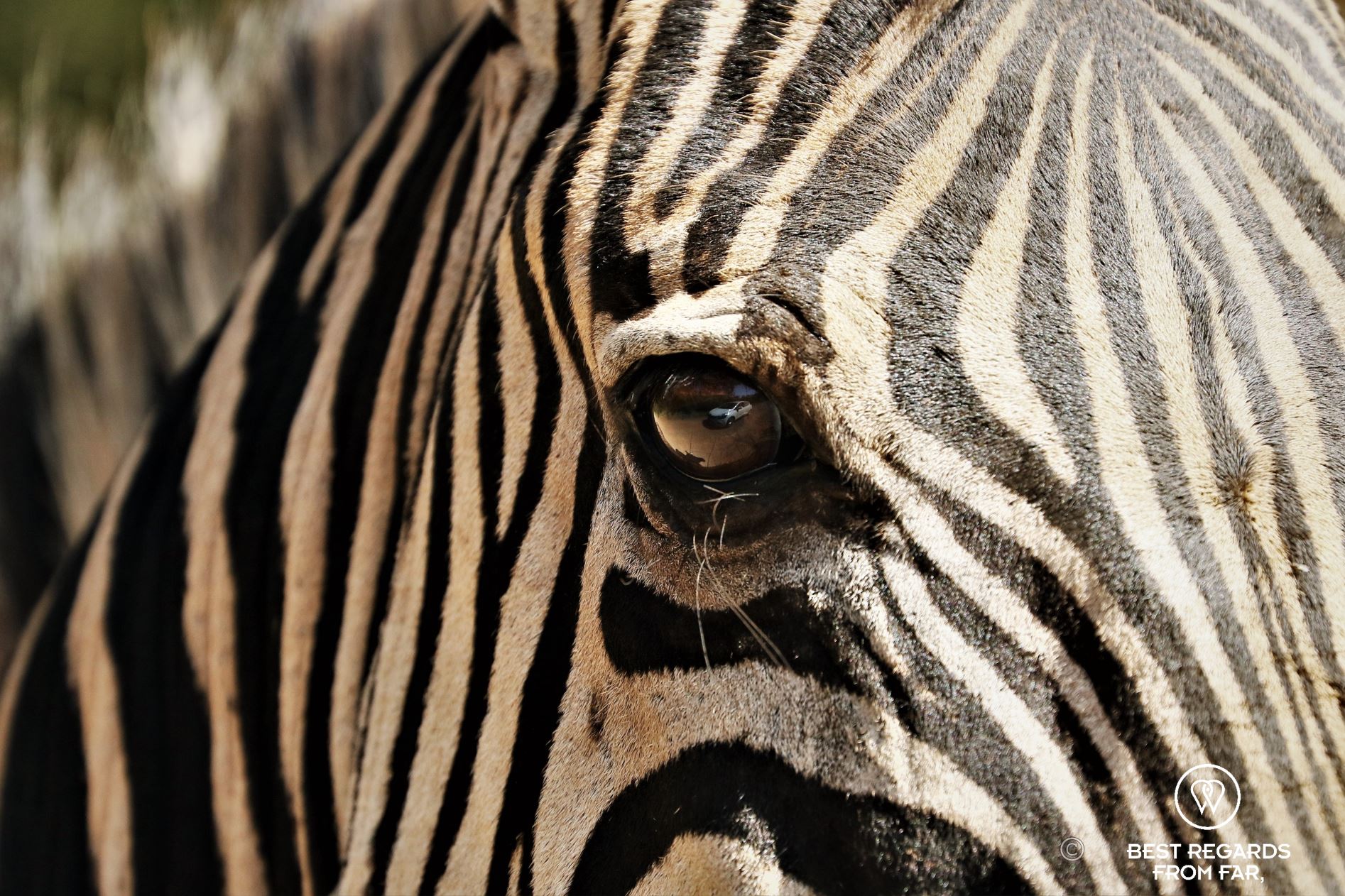
Game drives with safari guides driving open 4×4 vehicles are also offered in all government-run parks, at sunrise, sunset and at night. It is a great way of experiencing a guided drive to make sure your spotting skills are at their best. In order to set your expectations right, remember that safari guides are government workers on the clock. If some are truly passionate, unfortunately, this is too often the exception more than the rule.
- Insider’s Tip!
To get the best experience, go with the safari guides who work in the park as they know it like the back of their hand and are not limited by gate closing times, instead of going with an outside tour operator that will take you through the park with a 4×4.
- Do you like being fully taken care of, learning about animal behaviour, and being pampered?
Then your ideal safari takes place in a private game reserve.
It all starts with the very personal service when meeting your safari guide, discussing about the wildlife you wish to see and your other interests (birding, photography, conservation, geology…).
Safari guides in private game reserves tend to be very passionate and knowledgeable about the flora and fauna, and often collaborate with a tracker to increase chances of seeing wildlife, as well as with other safari guides that are in touch with via radio.
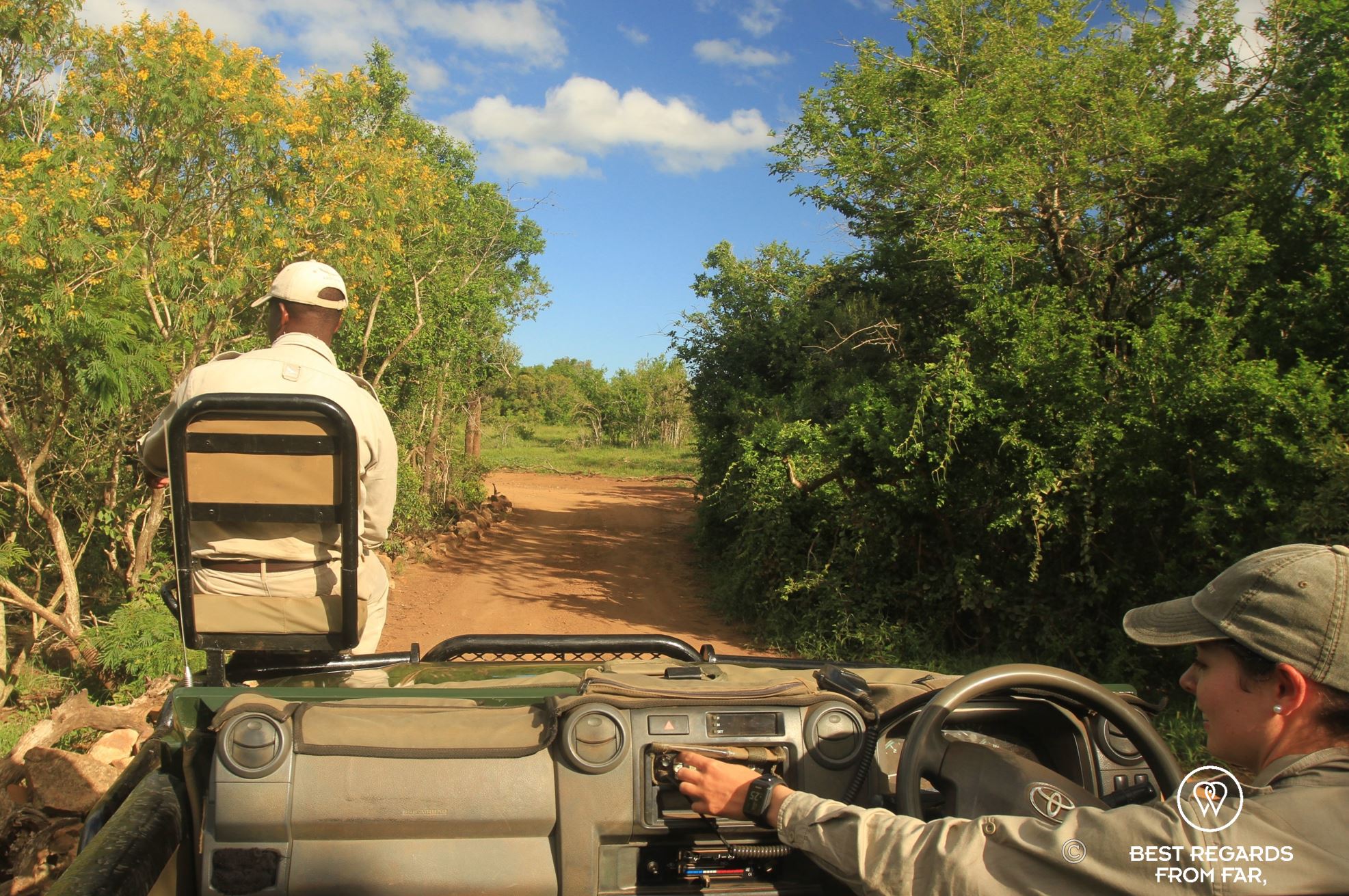
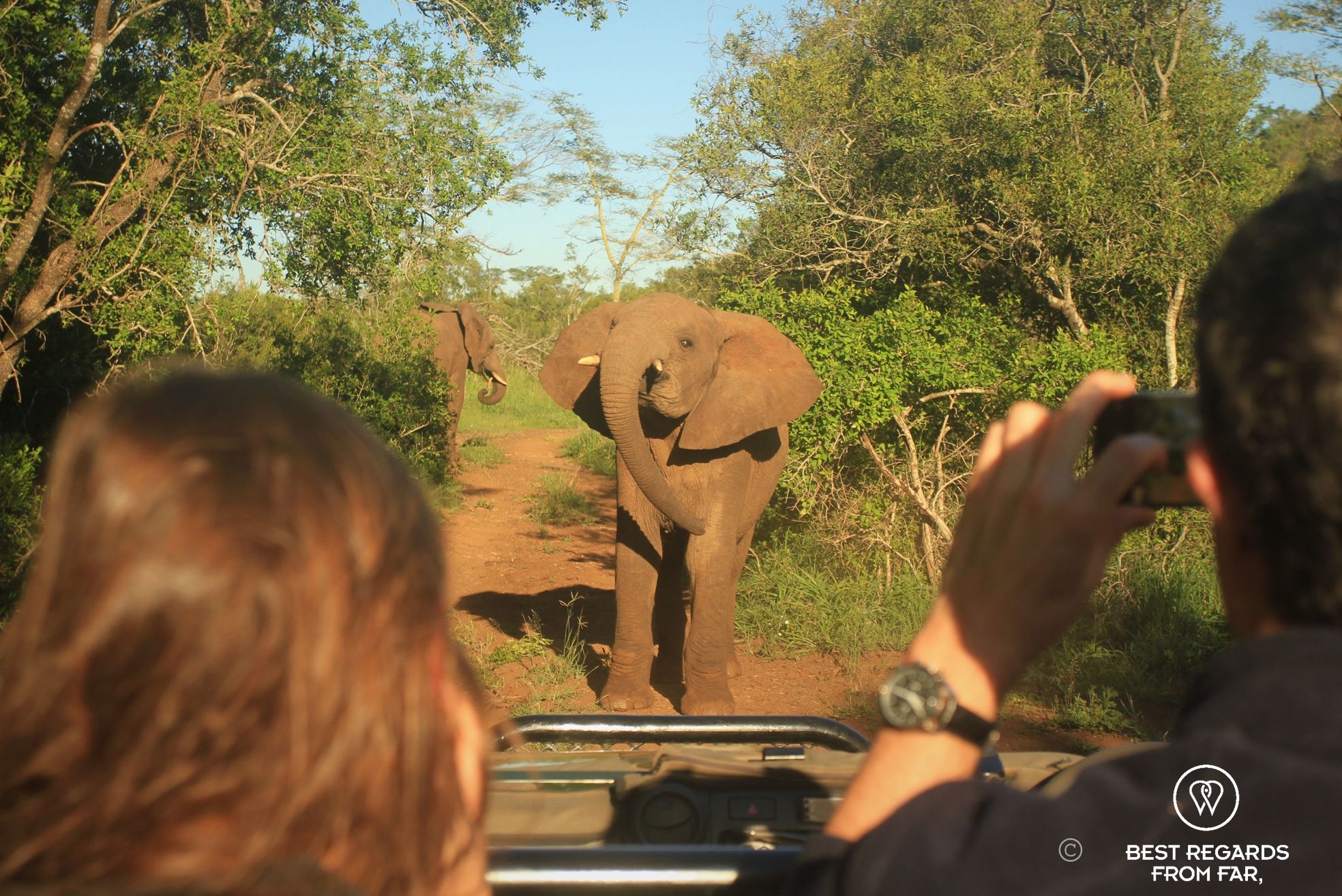
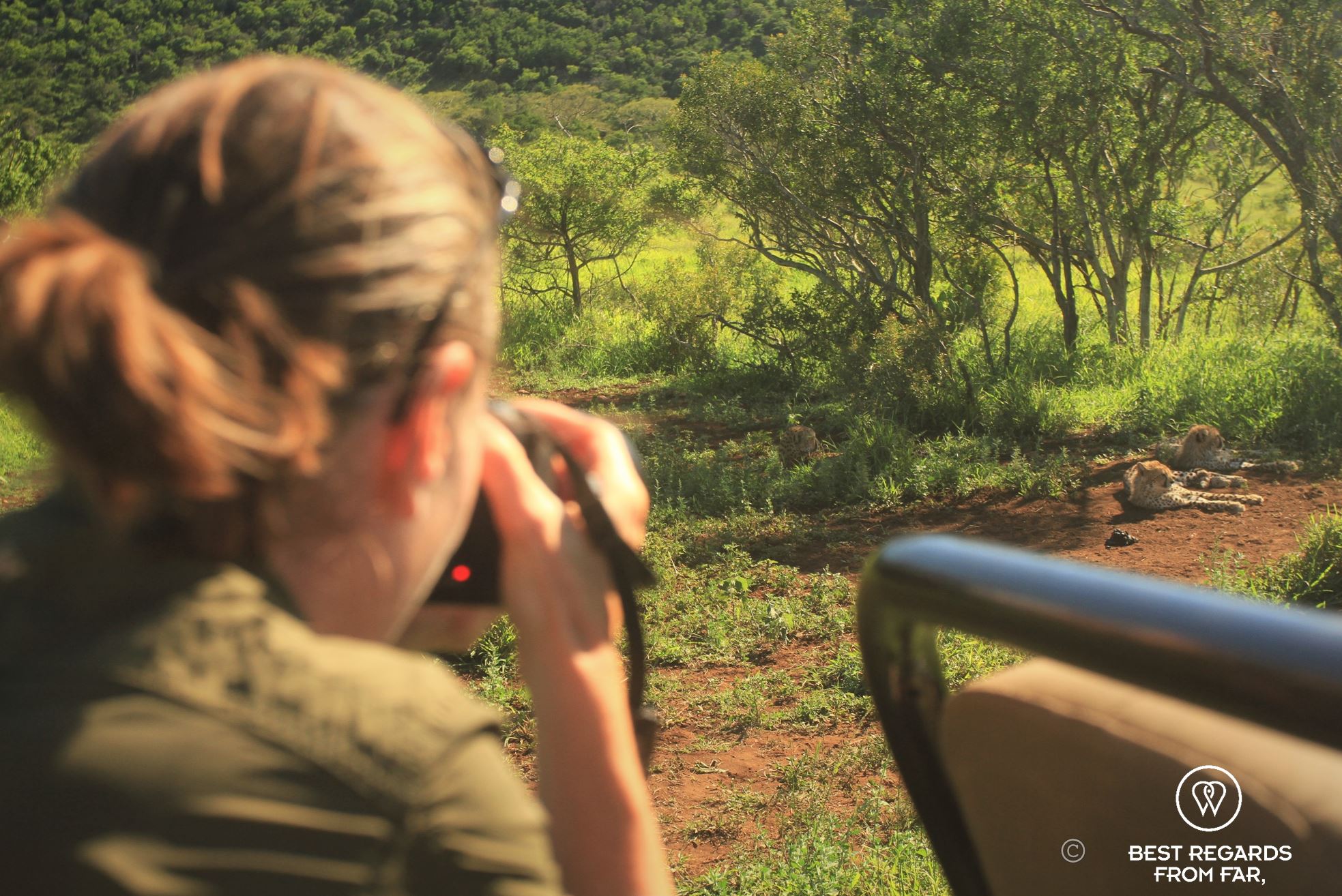
Communication is key as policies in ethical parks also limit the number of game drive vehicles at a sighting to not disturb wildlife too much, while making the experience more exclusive for guests (a complete different experience compared to the traffic jams and hectic parking situations one can witness by a cat signthing in a government-run park). At &Beyond Phinda Private Game Reserve for instance, the number of 4×4’s allowed close to a cheetah also depends on the specific situation, to not put pressure on a mother with cubs, nor to scare a young animal.
Sensitive to photography, and often photographers themselves, safari guides also know how to position the vehicle to optimize the framing and the light for your shots.
Your comfort
This goes from self-catering with your own vehicle (RV or 4×4 geared up with a tent on the roof) or even camping or renting safari tents or villas in government-run parks to staying in luxurious lodges with private swimming pools, delicious food served in a dream-like setting with a very personal service in private game reserves.
Government-run parks do offer 4-star accommodation like the Hill Top in Hluhluwe in KwaZulu-Natal but unfortunately, only the price is 4 stars: too often badly managed, run-down, and sometimes with a service that oscillates between nonchalance and pure rudeness… Your best bet in government-run parks is to self-cater in comfortable safari tents. These self-catering units are comprised of a deck, fully-equipped cooking facilities, beds and a bathroom. Cooking by your safari tent and seeing this cute bush baby sneak in to steal a mango peel, chasing away these monkeys interested in your food, listening to a warthog family taking refuge by the tents for the night, or noticing the glimpse of a hyena passing by attracted by the smell of your braai (“barbecue” in South African) is a thrilling experience!

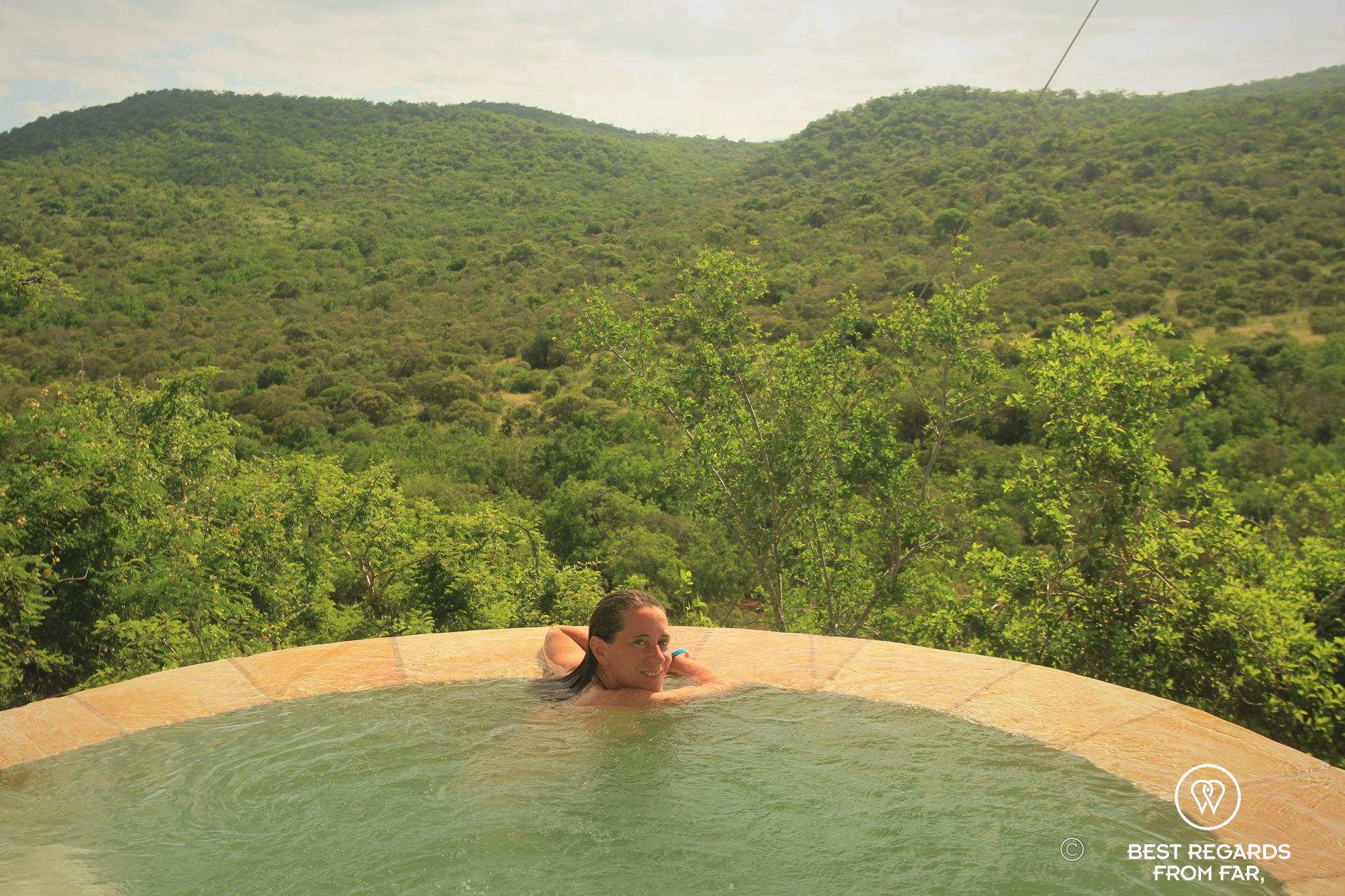

Private game reserves focus on your comfort from the moment you enter the park. The accommodation, food, and service are simply second to none. Of course, there are various levels in luxury and prices, but overall private game reserves do set the example in South Africa. To get a better idea of what to expect, check out this article!
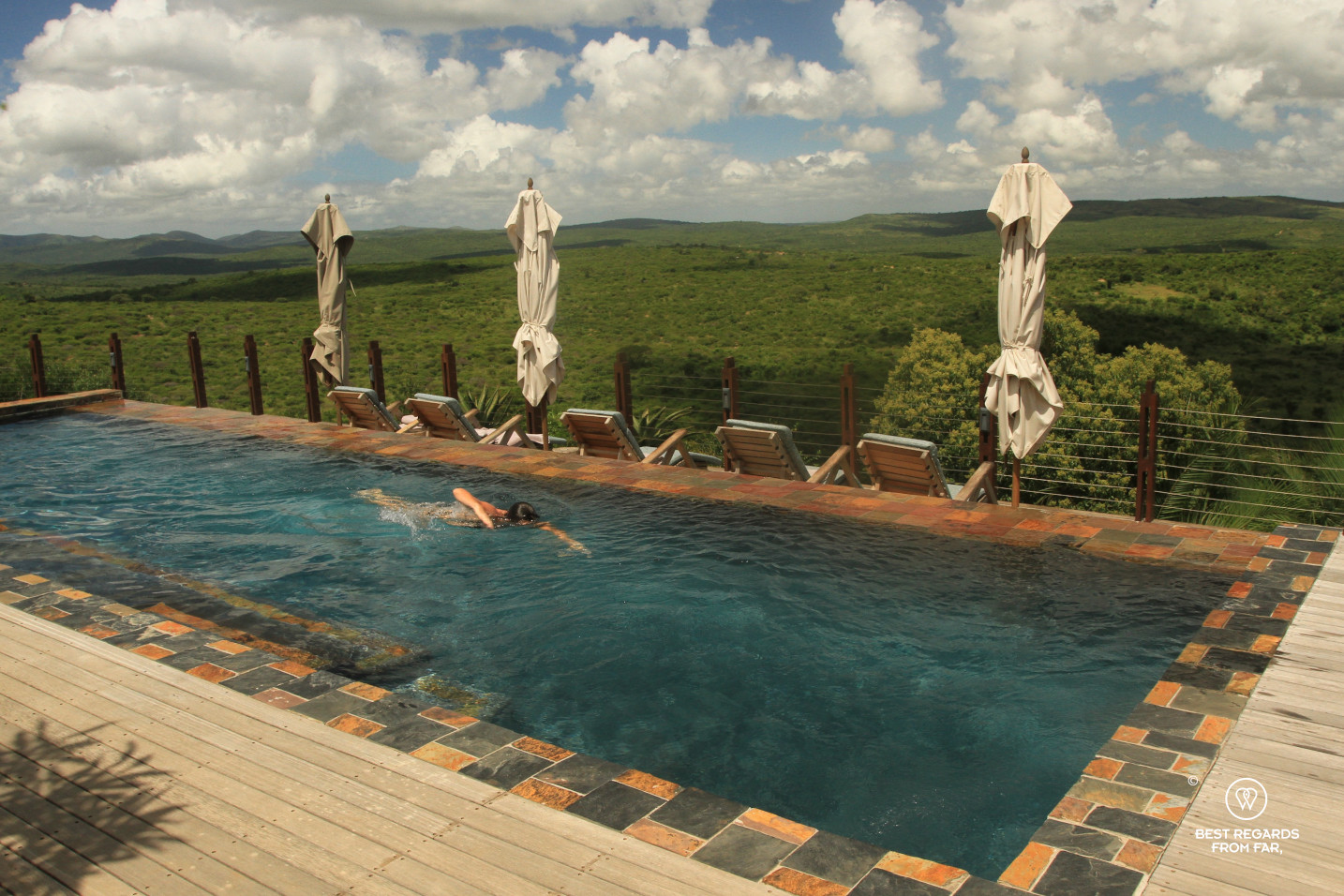



An in-between solution exists: some privately-run accommodation are located within government-run parks to combine acres of wildlife and comfort at a price tag that is much lower than the one of private game reserves. The conservation aspects are handled by the park, while all of the hospitality aspects are managed lodge, from hotel staff to safari guides for the best of both worlds! To get a better idea of what to expect, check out this article.
Conservation
If national parks used to lead the conservation efforts, these times are long gone. It is in the 1960’s that white rhinos were saved from extinction by Ian Player in Imfolozi KZN Park. Today, some national parks have lost the whole of their rhino population to poachers. Causes are many: corruption, lack of funding, badly managed draughts…
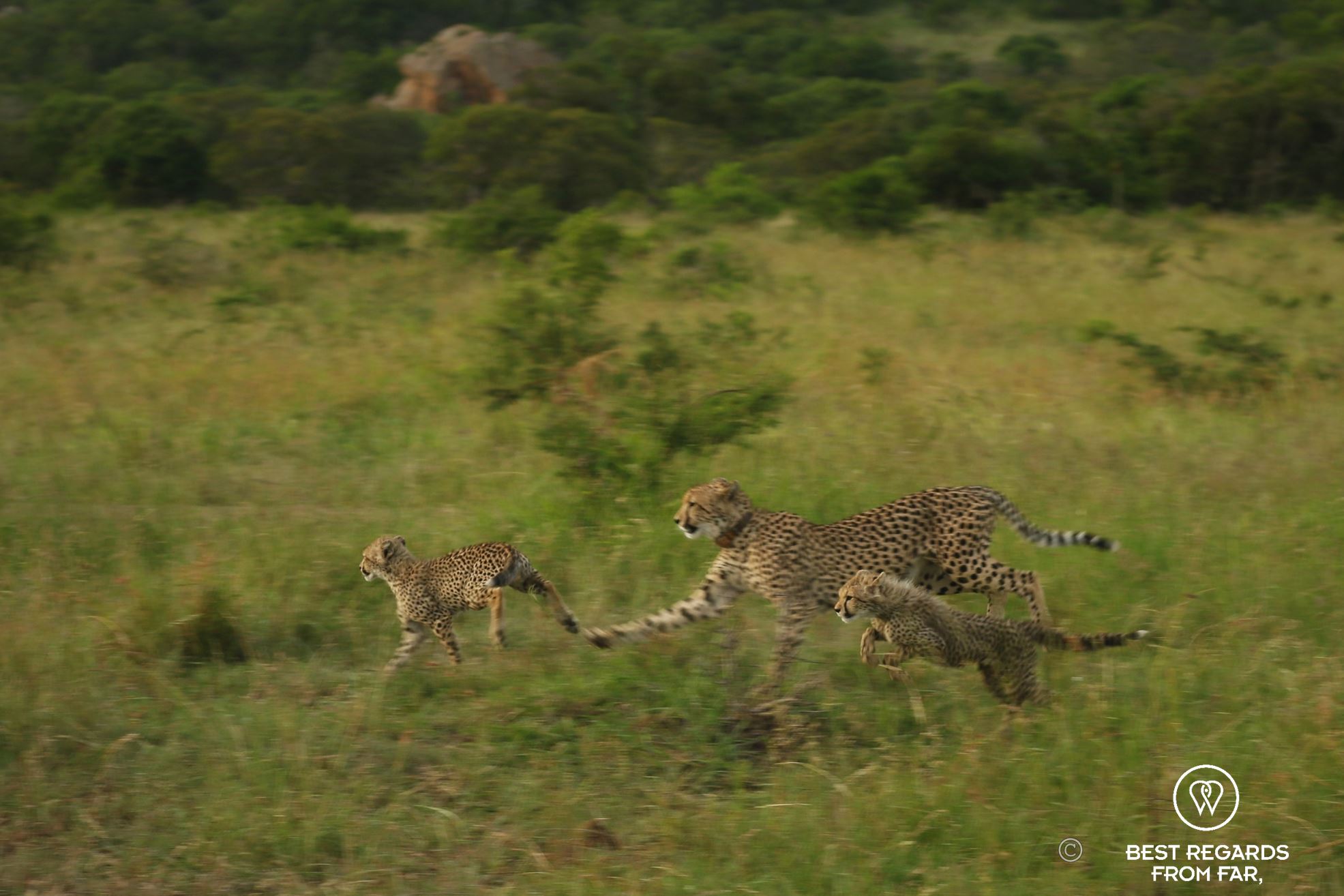

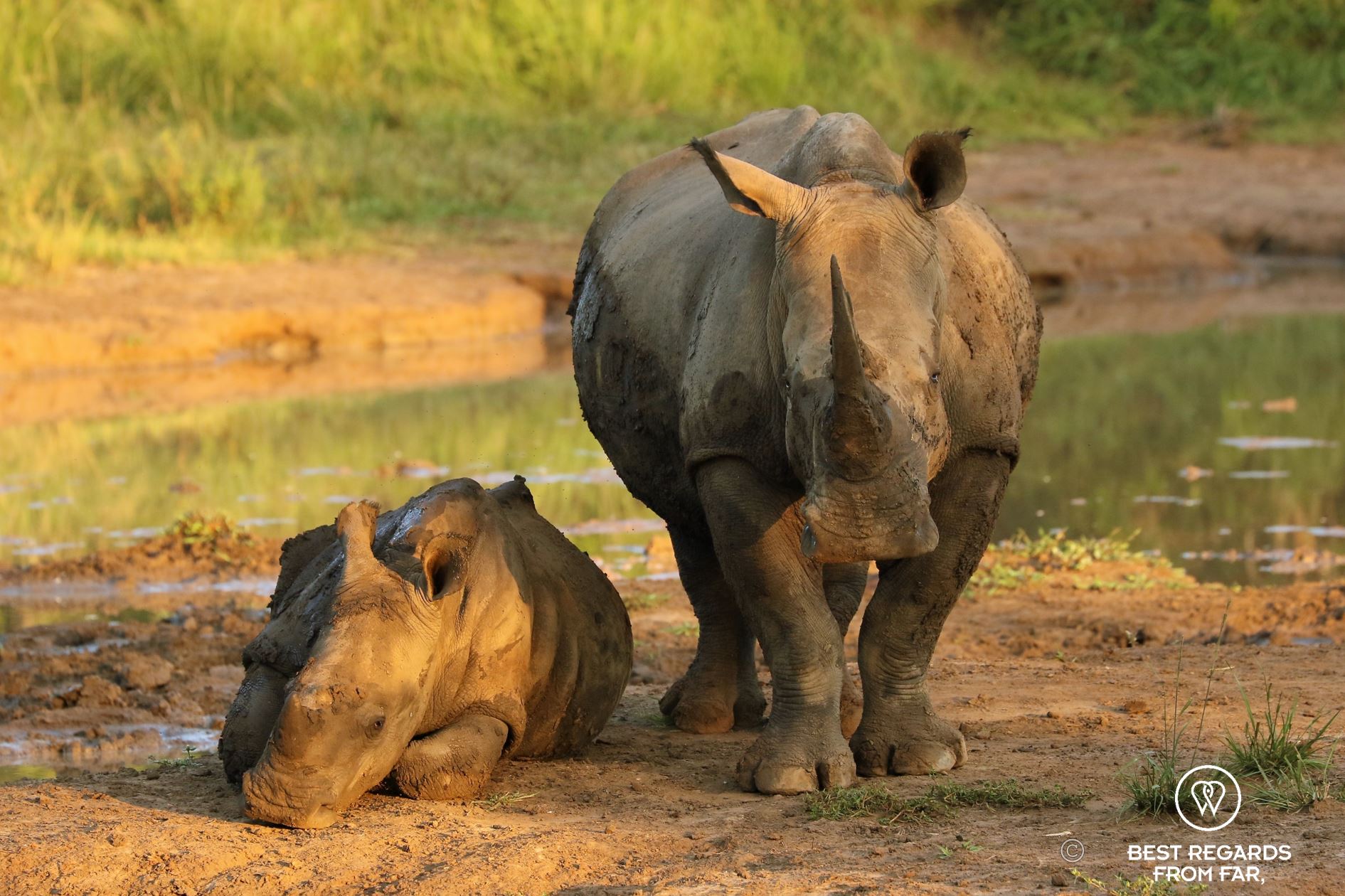
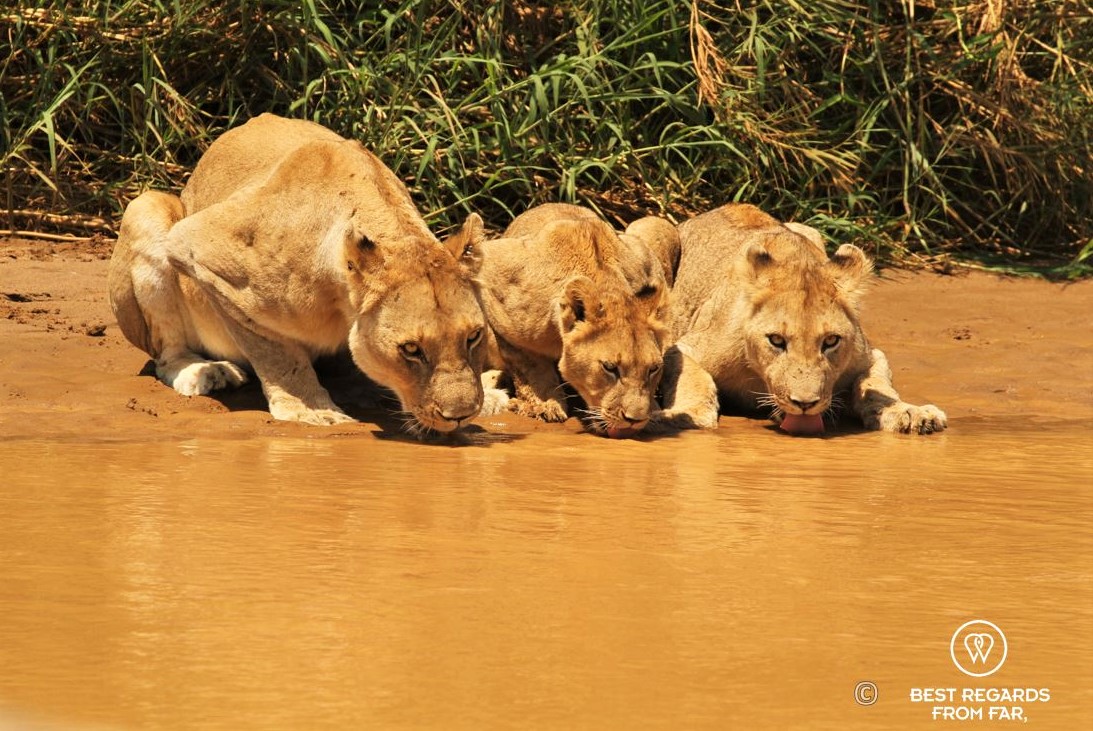
At the moment, private game reserves are leading the way: buying farm land to convert it back to wildlife habitat, involving local communities in the conservation efforts, providing job opportunities (one of the only ways to put an end to poaching), leading scientific research, investing to protect their animals, thinking out of the box to raise funds against poaching, etc. Staying at an ethical private game reserve, means supporting sustainable business plans to conserve wildlife for the long term.
Ethics
Poaching is a real danger. Rhinos for their horns of course, but also pangolins for the Asian market as well, turtle eggs for traditional medicine, and subsistence poaching around the parks… There is so much money involved in the poaching of rhino horns that a mafia-type organization threatens and bribes to get the coveted horns. Unfortunately, corruption seems more common in government-run parks. A few years ago, a regional ranger in charge of fighting poaching got caught by field rangers in Kruger Park with a couple of rhino horns under his arms… Of course, the few rotten apples are the ones making the news, and most of the guides and rangers are honest people doing a great job.
To prevent corruption in private game parks, the best in class run very frequent checks on all of their staff, ensuring that they are not under a big financial pressure because of an unexpected life event.
However, private game reserves are not all the same. Beware! Unethical practices are common in some of them: for instance, a piece of game can get shot to ensure that guests will have their perfect lion photo before breakfast.
In a nutshell, interference with wildlife should be kept to a minimum: reserves advertising for cub petting or walks with lions should be avoided at all costs (these young lions are part of the atrocious bone trade or canned hunting industry).
- Insider’s Tip: How to make sure you select an ethical game reserve?
Check its website thoroughly and make sure the game reserve you are considering is involved in national and international conservation projects with recognised organisations. Also ensure that local communities are taken into account as well as land issues as they are paramount to a sustainable approach.
If you are going through a travel agent, ask for the names of the game reserves you will visit, and check them out online prior to booking. Make sure they do not support wildlife interaction. Voice your concerns about ethics and ask for data.
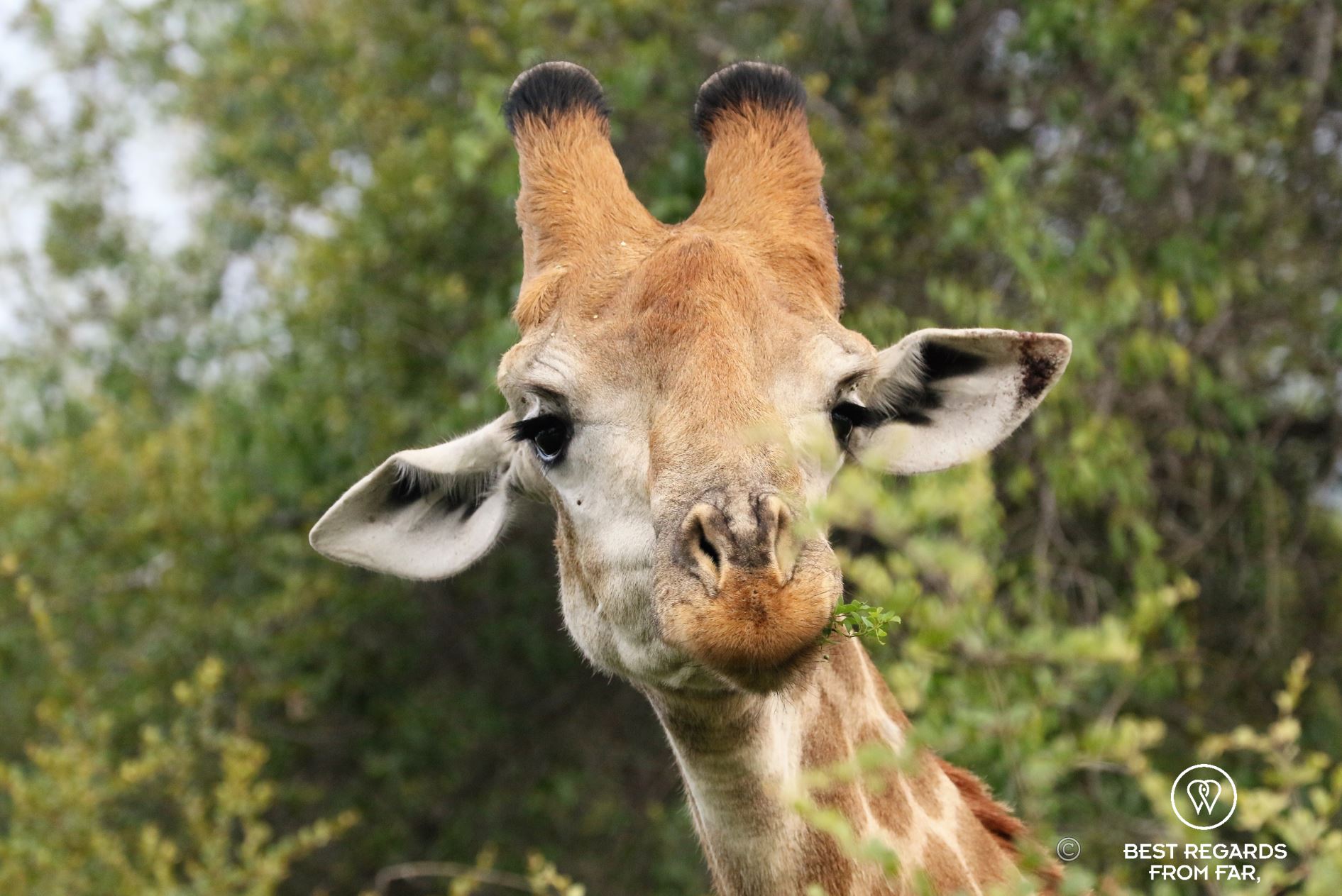

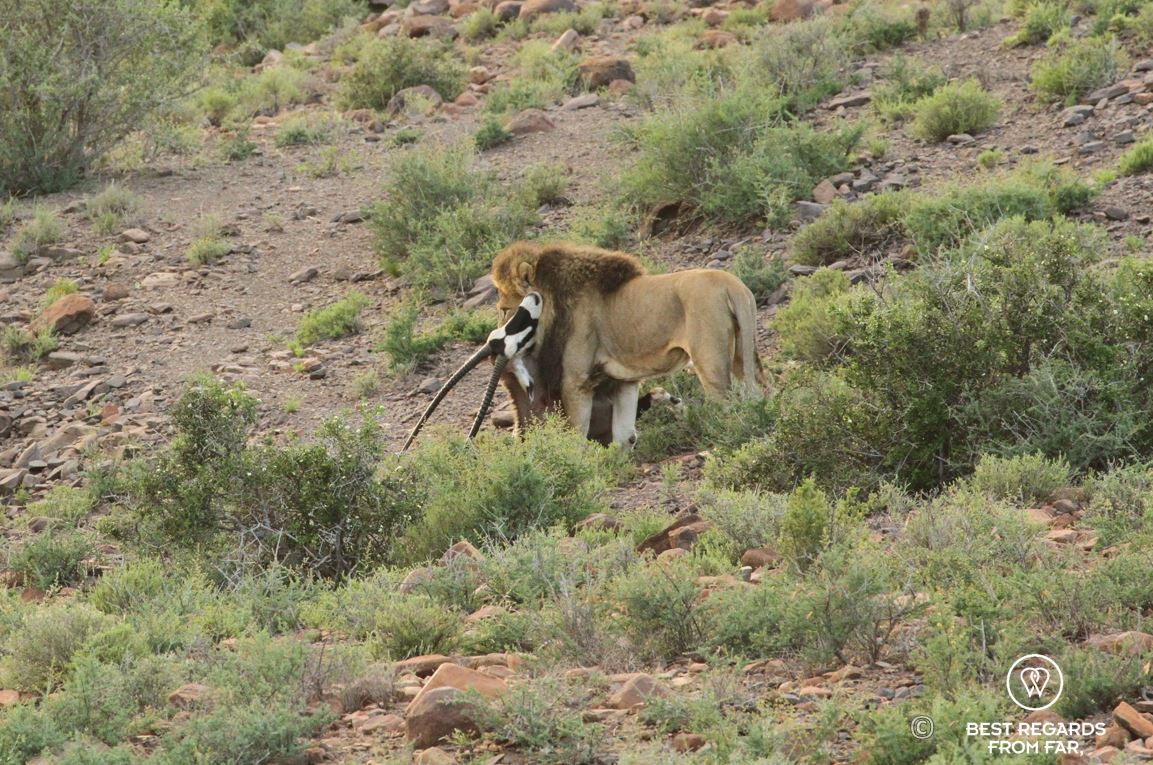

Health
Be aware of malaria risks in some of the parks. Buy your anti-malaria pills in your home country, and inquire about the mosquito situation based on the season when you visit.
The Hluhluwe Imfolozi region in KZN is a low risk malaria area. In the dry season (May-September), mosquito repellant and long sleeves often suffice.
The African tick bite fever is also frequent: make sure you check yourself for ticks after walking in the bush. If it is usually not a serious illness, and thankfully Lyme disease is not present in Africa, suffering from tick bite is very uncomfortable.
Area & landscape
South Africa presents such varied landscapes that the parks and reserves can be very different: the desert-like Karoo, the iSimangaliso Wetlands with its abundant birdlife and coral reef, the hilly Hluhluwe Imfolozi area, the smaller Mkuze Park, the sand forest of Tembe Elephant park, the vast Kruger region… Obviously, wildlife differs based on the ecosystem.
Choose a vast reserve with various ecosystems in order to spend a minimum of two nights, even though three is preferred as no game drive is the same, and experiencing the rhythm of the bush requires a bit of time.


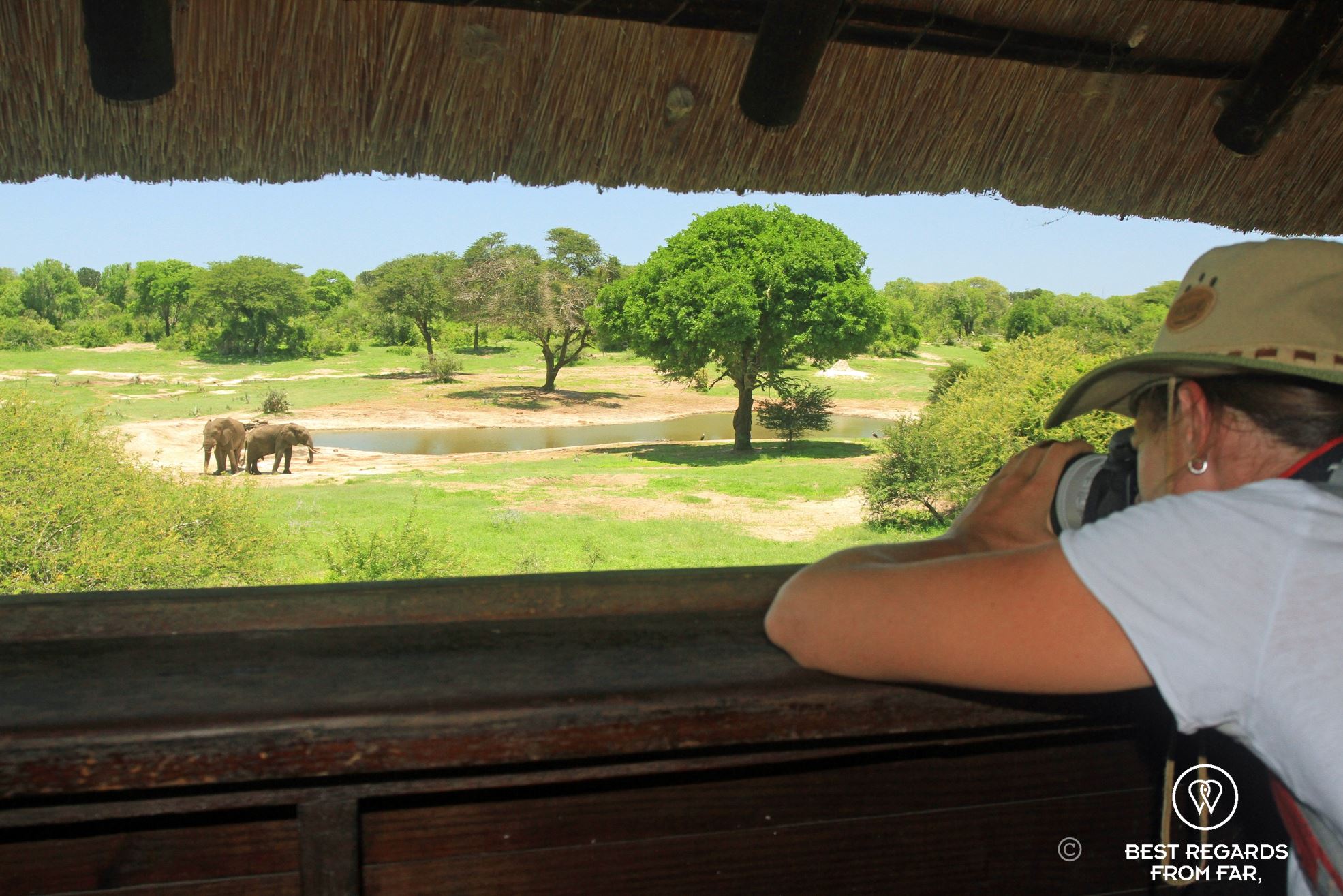

Our personal preference is the Hluhluwe Imfolozi region with its rolling hills, winding rivers and great wildlife spotting: the Hluhluwe Imfolozi KZN Park and the neighbouring &Beyond Phinda Private Game Reserve.
Season
In the dry season (May till September), animals can be easier to spot as they gather by water holes and the vegetation is less dense. It gets significantly colder night.
In the austral spring time (late September till late December), young animals add a huge cuteness factor to your safari! The bush is beautiful and green, and a bit thicker.




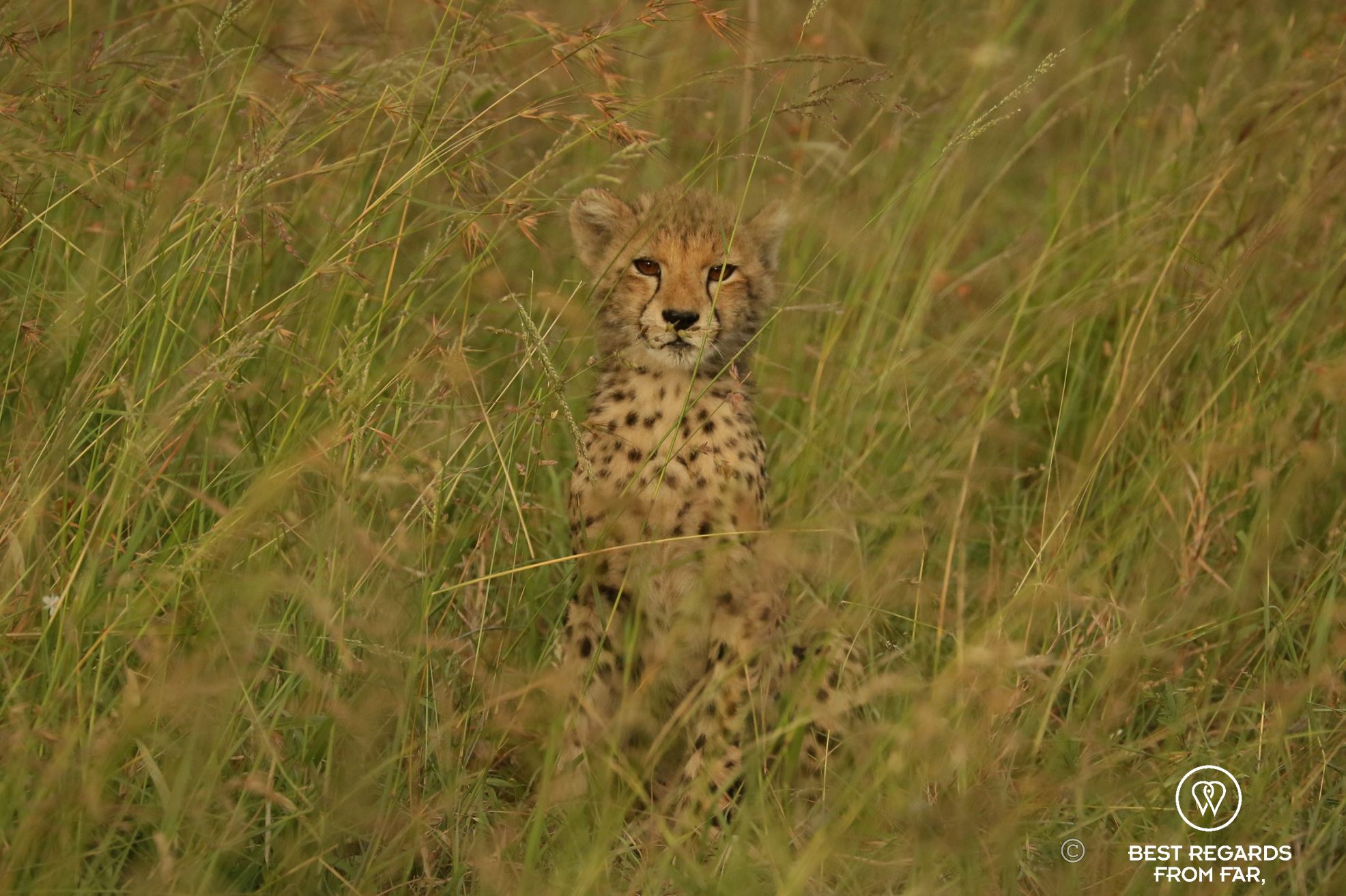
Budget
Private game reserves and privately-run lodges in government parks follow all-inclusive schemes with sunrise and sunset game drives, optional bush walks, and all food and drinks included. Adding this all up in a national park with a 4-star accommodation will certainly be cheaper, but so will the quality and level of service.
If you are short on time, spend the money on a private game reserve, especially if this is your first safari. Beyond being a dream-like holiday, you will gain a lot of knowledge about animal behaviour, how to look into the bush and what to look for… all coming in handy if you wish to experience the self-drives in national parks at a later time.
If the price tag is too high, go for a government-run park. After facilities degenerating following the corruption-driven Zuma years, President Ramaphosa has realised the tourism potential of South Africa, resulting in more money going to the parks: new game driving vehicles, improved facilities…
Insider’s Tips to make the most of your safari
- A safari is NOT a bucket list item!
Every safari is different! There are so many biomes and unique animal interactions, and so much more that the Big 5!
- Don’t go only for the Big 5!
“In one hour we saw the Big 5, so we left the park”… Really? This is such a waste: parks are full of wildlife, way beyond the Big 5. For the record, the reason for the Big 5 is that these large mammals were the hardest to shoot by big-game hunters as they are particularly ferocious when cornered and injured. Today, it has become a marketing motto that seems to prevent visitors from enjoying all the other species…
- As a reminder, here are the Big 5:
- Buffalos,
- Elephants,
- Leopards,
- Lions,
- Rhinoceros.
Still, if you must tick off bucket list items, here are a few challenging ones that will enhance your safari experience and make you a real spotter!
- The Ugly 5
- Hyena,
- Marabou stork,
- Vulture,
- Warthog,
- Wildebeest.
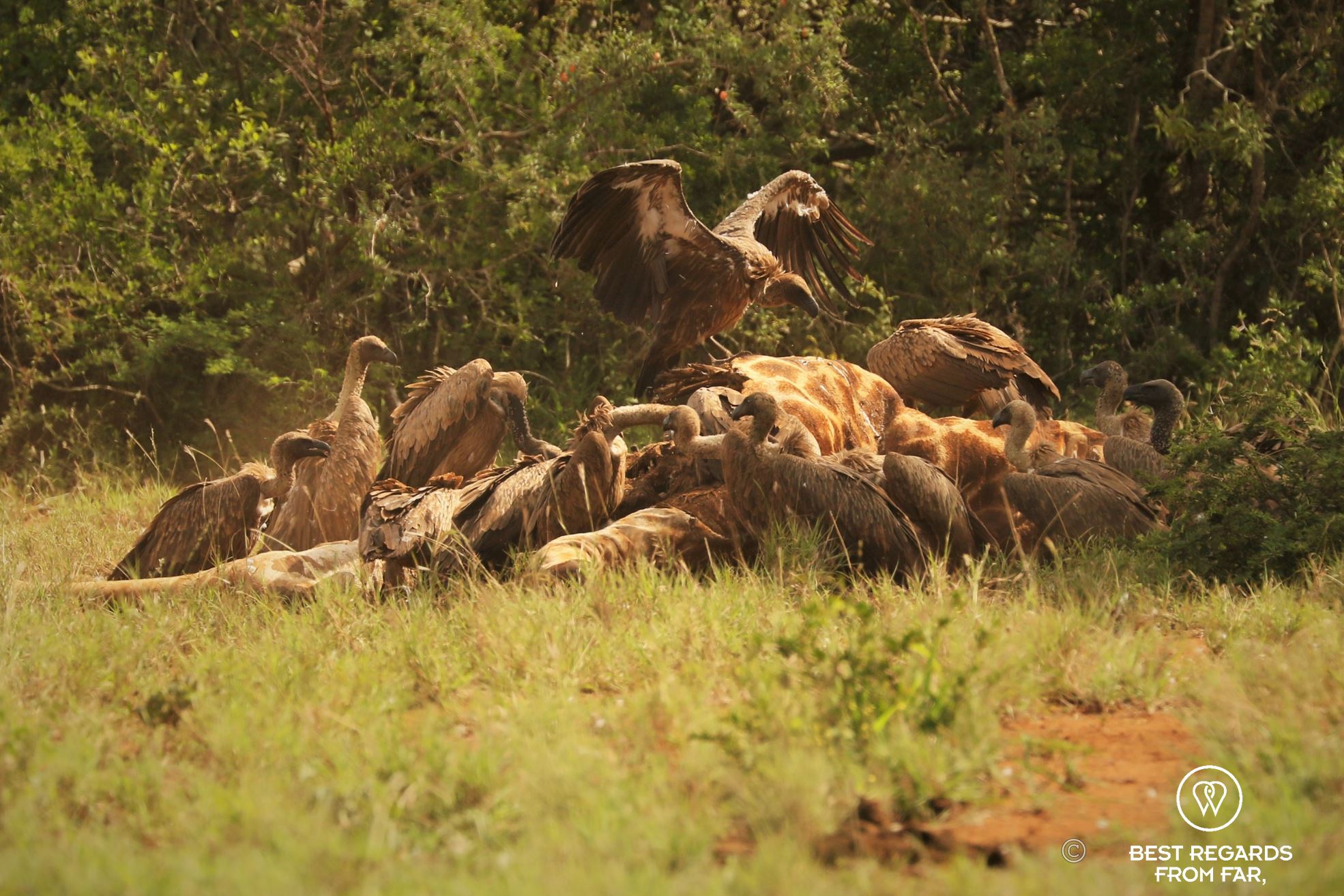



- The Little 5
- Ant lion,
- Buffalo weaver,
- Elephant shrew,
- Leopard tortoise,
- Rhino beetle.
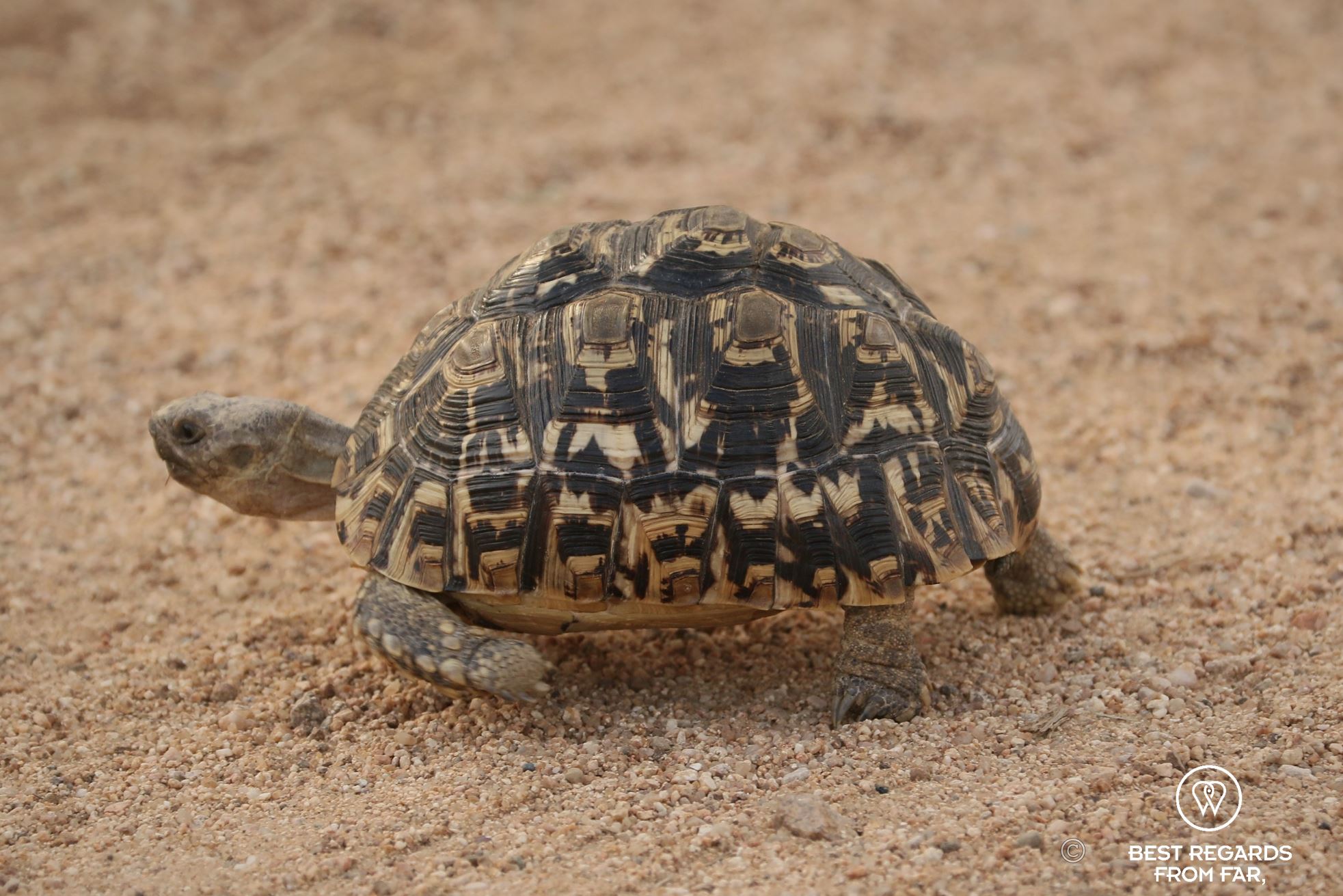
- The Shy 5
- But for the meerkat, the others of nocturnal animals making it a real challenge to spot and even more to photograph:
- Aardvark,
- Aardwolf,
- Bat-eared fox,
- Rhino beetle.
- Our own personal list of the colourful flying 5
- European roller,
- Bee eater,
- Malachite kingfisher,
- Melba finch,
- Barbet.


- Take it in!
African landscapes are magical. The sound of the bush, the smells, the sunsets, the warm wind on your skin, and starry nights…
Travel tips:
- This article was put together after an extensive research trip in South Africa visiting Mkhuze National Park, Karoo National Park, iSimangaliso Wetland Park, Kosi Bay Nature Reserve, Tsitsikamma National Park, Greater Kruger, Kruger National Park, Hluhluwe Imfolozi, Tembe Elephant Park, Mafikeng Game Reserve and &Beyond Phinda Private Game Reserve.
- All photos were taken in the wild. Feel free to reach out should you want a print.
- Check out this interactive map for the specific details to help you plan your trip and more articles and photos (zoom out) about the area! Here is a short tutorial to download it.
For more safari-inspired articles, click on these images:
Part of this article was published in the Beyond Boundaries e-magazine by Xtreme Adventure:


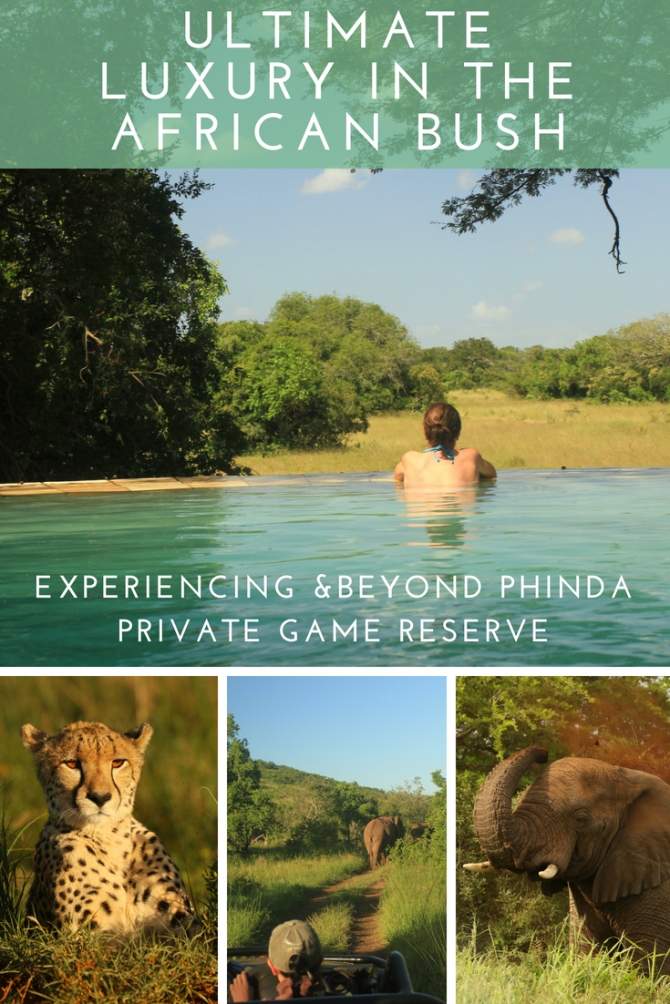
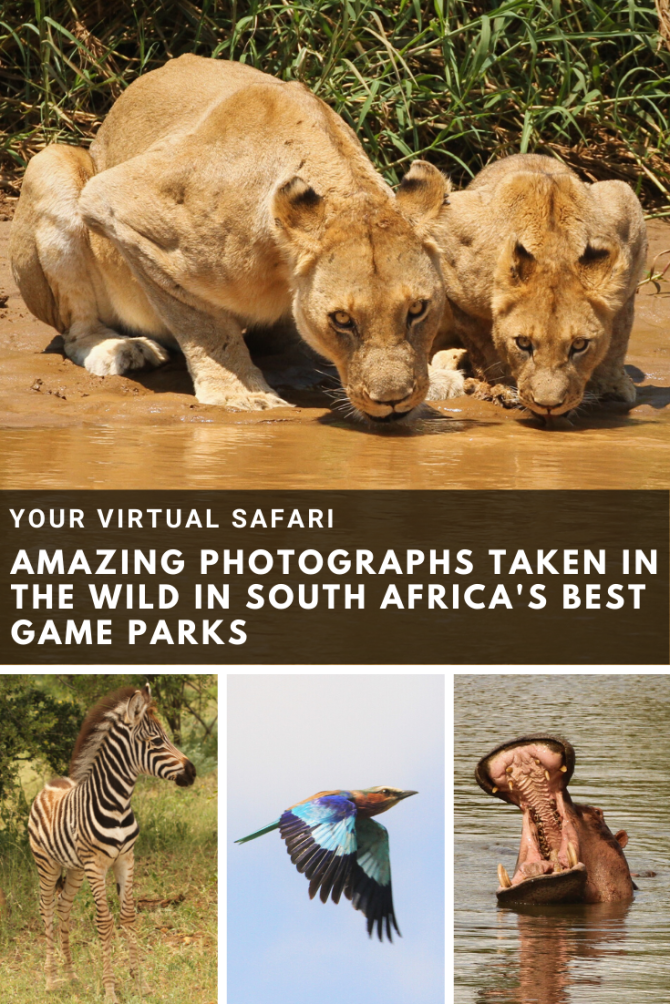


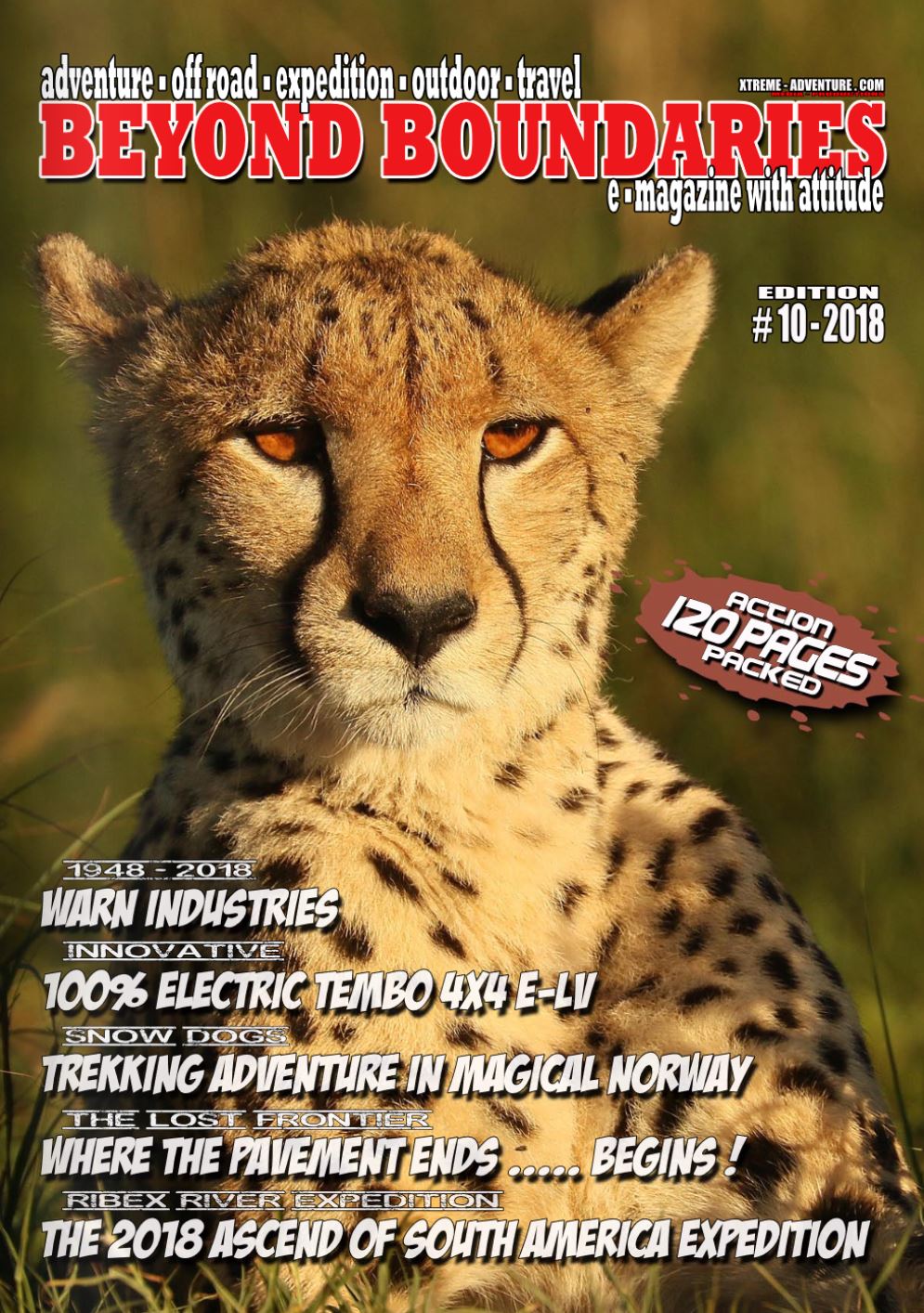
It must be incredible to do a safari and see al those amazing animals in the wild! I am also super impressed by the landscapes! Must be really nice to experience!
Hi Ophelie, yes, it is very special. All the more special that you never really know what you will spot. And while many people focus only on the Big 5, there so much more to it and as you rightly point it out, just the landscapes are incredible.
Claire